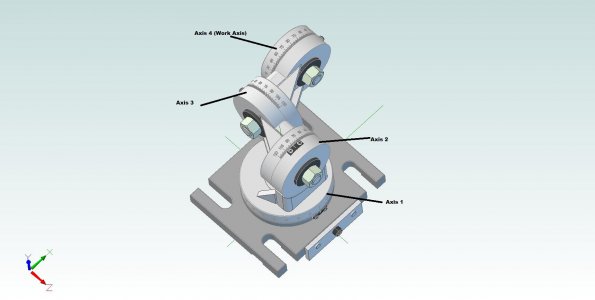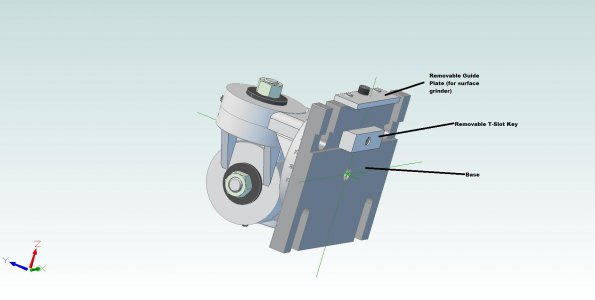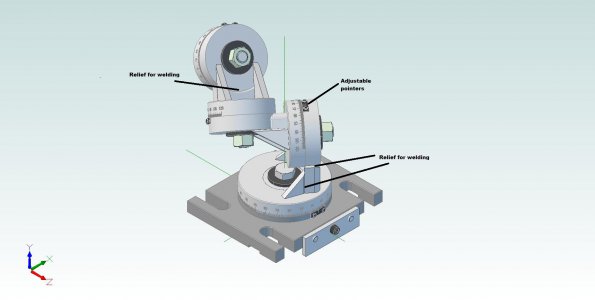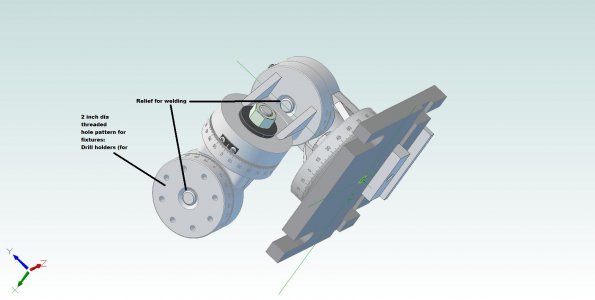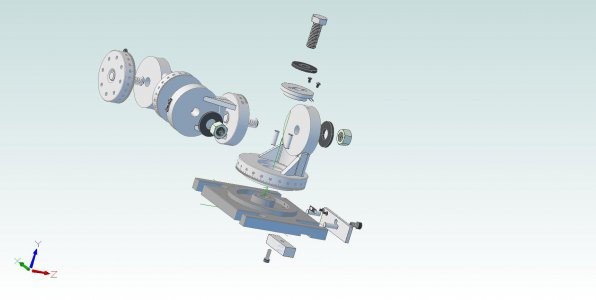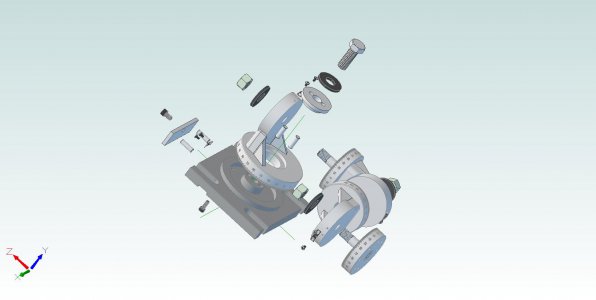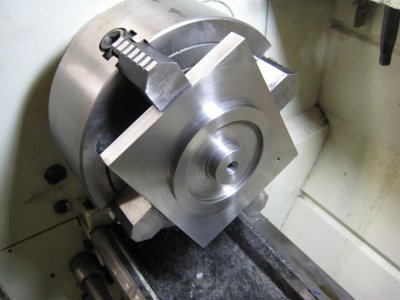Doesn't look too bad, John. I will make a couple of comments on your GT&D. A parallelism callout will not have a reference to a circular tolerance zone as you have drawn on the 3.750 OD ring. Same with the flatness callout on the bottom of the base, Datum A. The True Position on the 0.2490 reamed holes should be referenced to a diameter such as the 3.750 ring OD rather than a flt surface as you have drawn as Datum B. Depending on what you have fitting the reamed holes, I presume dowel pins, the mating part will have a feature that fits closely somewhere, and that's what you should look for to determine the reference datum for their True Position.
That's all I see at a glance. I'll study it a bit more and see what else I can find. I don't see any concentricity callouts, which I would expect to see, given all the parts that must rotate with some precision.
Thanks Tony, I was hoping you'd chime in!

)
1) What I was trying to indicate was that the plane on top of 3.750 dia boss should be parallel to the base's bottom. How should that be done?
2) The center section (the 1.250 dia) is the pilot diameter for the base turret and nothing else, so concentricity is taken care of. The 3.750 and 2.875 diameters don't need to be all that concentric to the 1.250 diameter apart from aesthetics. See runout of the turret with respect to the pointer would just look bad.
3) As far as the dowel pins: they serve as an anti rotation device for the mating part (the base clamp). The goal is to prevent the tightening of the center bolt from rotating the base turret. The mating part needs to slide freely, but with no side play, over the dowel pins. So, their location with respect to holes in the mating part is important. I'm not sure how to go forward given this requirement. Can you offer any advice?
I'm currently enamored with true position since we have a design (and print) at work for a near zero backlash planetary gearbox (for a satellite) that specifies TP to 0.0001" from multiple datums (we need the low friction of a planetary with the low backlash characteristics of a Harmonic drive).
We've found only one guy in the country who can make these parts consistently! He came to our shop and set up our wire EDM machine with fixtures that we're nothing short of amazing! Now we can do it too! The trick was to use this fixture to move the workpiece rather than move the wire. He's relying on our wire EDM machines incremental rather than absolute accuracy. The wire simply cuts a hole, but never moves more than 0.050 or so.
His fixture used ceramic dovetails, indexers with sub arc sec accuracy. Even our master machinist said he "felt inadequate" in the presence of this guy!
Getting back to my design, ANSI 14.5m is a tough thing to get my mind around. I know how it all should fit together in my mind, but getting it on paper is a horse of another color...

Makes me appreciate mechanical engineering more and more. Maybe I should stick to high reliability electronics design and leave the precision to the pros? Just kidding...
John
